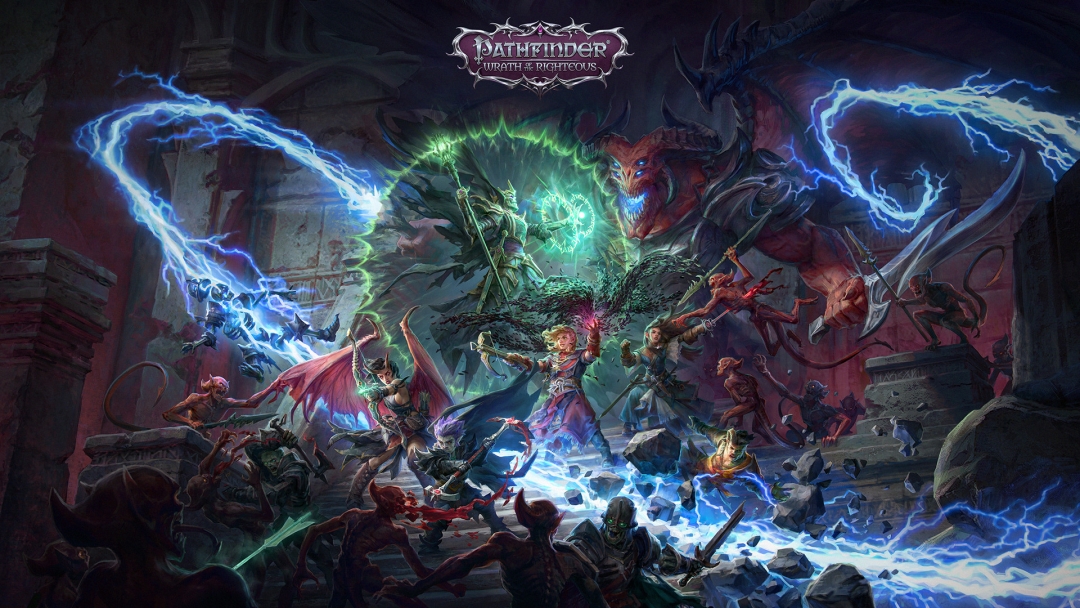
Pathfinder: Wrath of the Righteous is the latest game to take Paizo’s multi-book “Adventure Paths” to the video game format. These adventure paths take a player from level 1 all the way to 20, and are a complete campaign following a character’s journey from beginning to end. So it makes sense they’d become the the latest focus of the isometric RPG genre.
We saw Owlcat Games kick off Pathfinder’s foray into PC with Pathfinder: Kingmaker, which was overall a faithful recreation of the tabletop RPG. With the grander scale of Wrath of the Righteous, can Owlcat Games maintain a similar level of quality?
Pathfinder: Wrath of the Righteous
Developer: Owlcat Games
Publisher: META Publishing
Platforms: Windows PC (Reviewed)
Release Date: September 2nd, 2021
Players: 1
Price: $49.99 USD
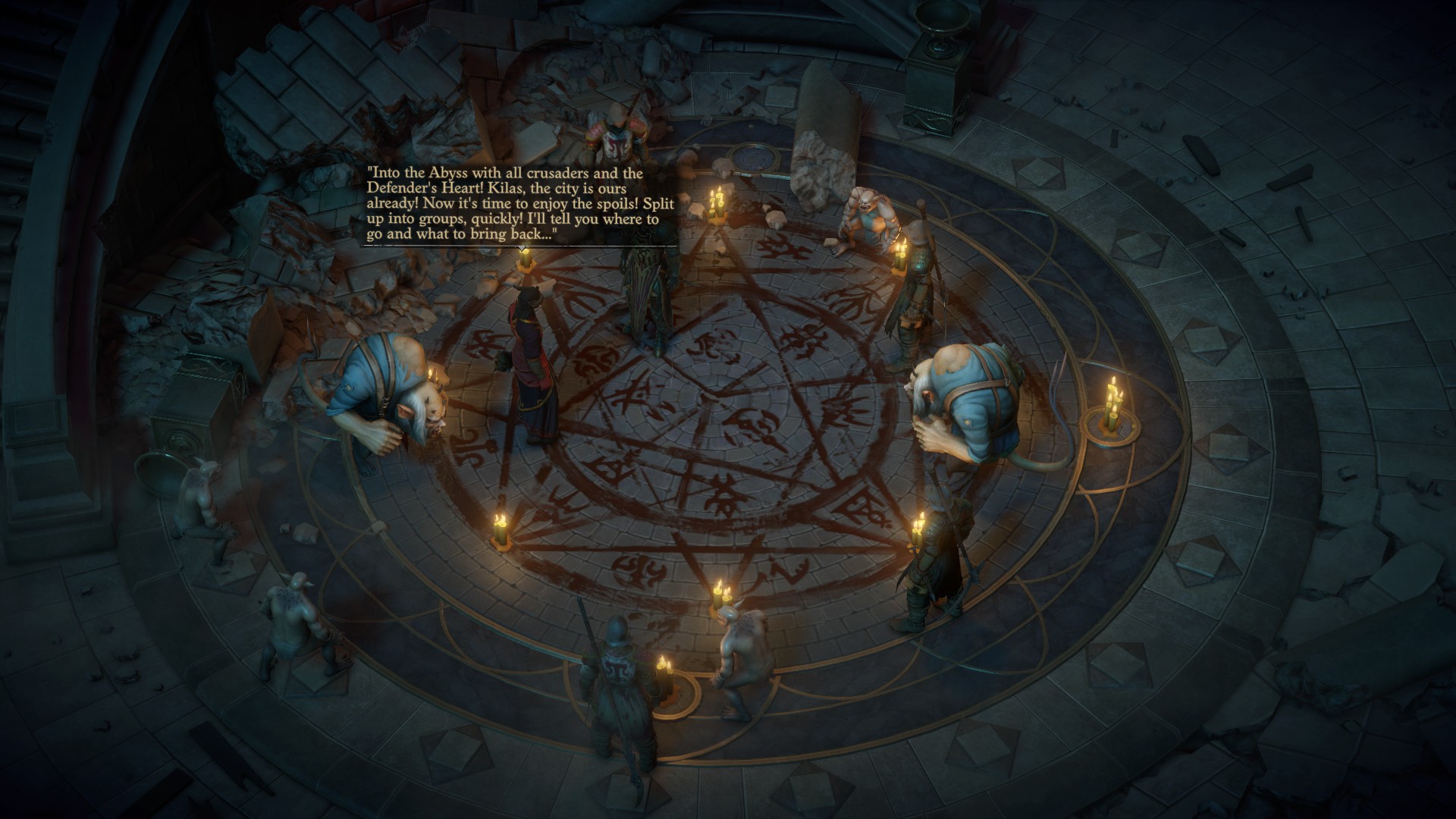
As someone who’s both played Kingmaker as well as the original tabletop Adventure Path of Wrath of the Righteous, I have an opportunity to compare the game on two fronts. Both as a successor to Owlcat Game’s previous title, and to the source material. Even with this familiarity however, it was apparent to me that one thing could stop aspiring players; the system.
Pathfinder as a tabletop RPG is a system laden with choices. From classes, to archetypes, to feats, and even with the diminished choices in the video game there’s still a great many to choose from. But how to choose? I highly recommend picking a default character with auto-leveling if you’re not familiar with the tabletop game (or at least familiar with 3.5 D&D, which is similar).
Barring this familiarity, a desire to read and learn the system is necessary. For instance, someone new will have no idea that you take a -4 penalty with ranged weapons when attacking a foe already engaged in melee combat. The little rules that Pathfinder regulars take for granted are completely new and strange for those entering the system.
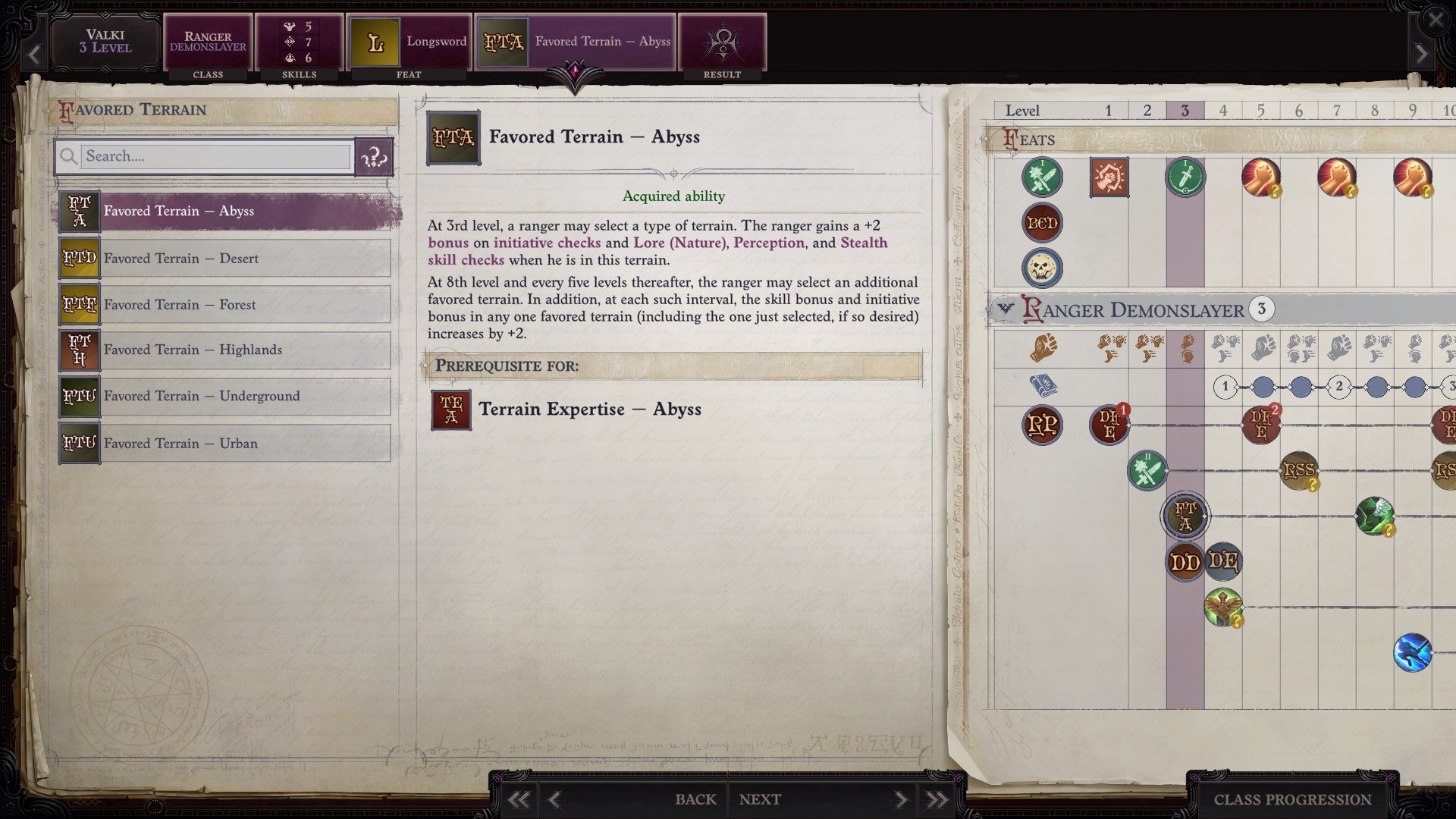
With that out of the way, there’s a lot to say about what Wrath of the Righteous does right. Players that already know or are willing to learn the rules will find an in-depth combat system that borrows well from its TTRPG roots.
In adaptations of tabletop games, little details and strategies are often forgotten. But Wrath of the Righteous doesn’t shy away from tricks like invisible enemies (even early on), and they expertly introduce the concepts players encounter.
It’s not enough to just have big attack and damage numbers, utility spells have their place. Dispel Magic, See Invisibility, Aura of Purity, and more all have a place. It might seem silly to have a specialized spell to just move gasses around, but you’ll quickly change your tune when a Cloudkill is cast over your party.
In addition, traps are cleverly placed. Gone are the days of characters fiddling with their hands on top of a zone of death. Now perceptive characters not only spot traps, but traps also have a small line showing their source, trigger, or power source in order to properly disarm them.
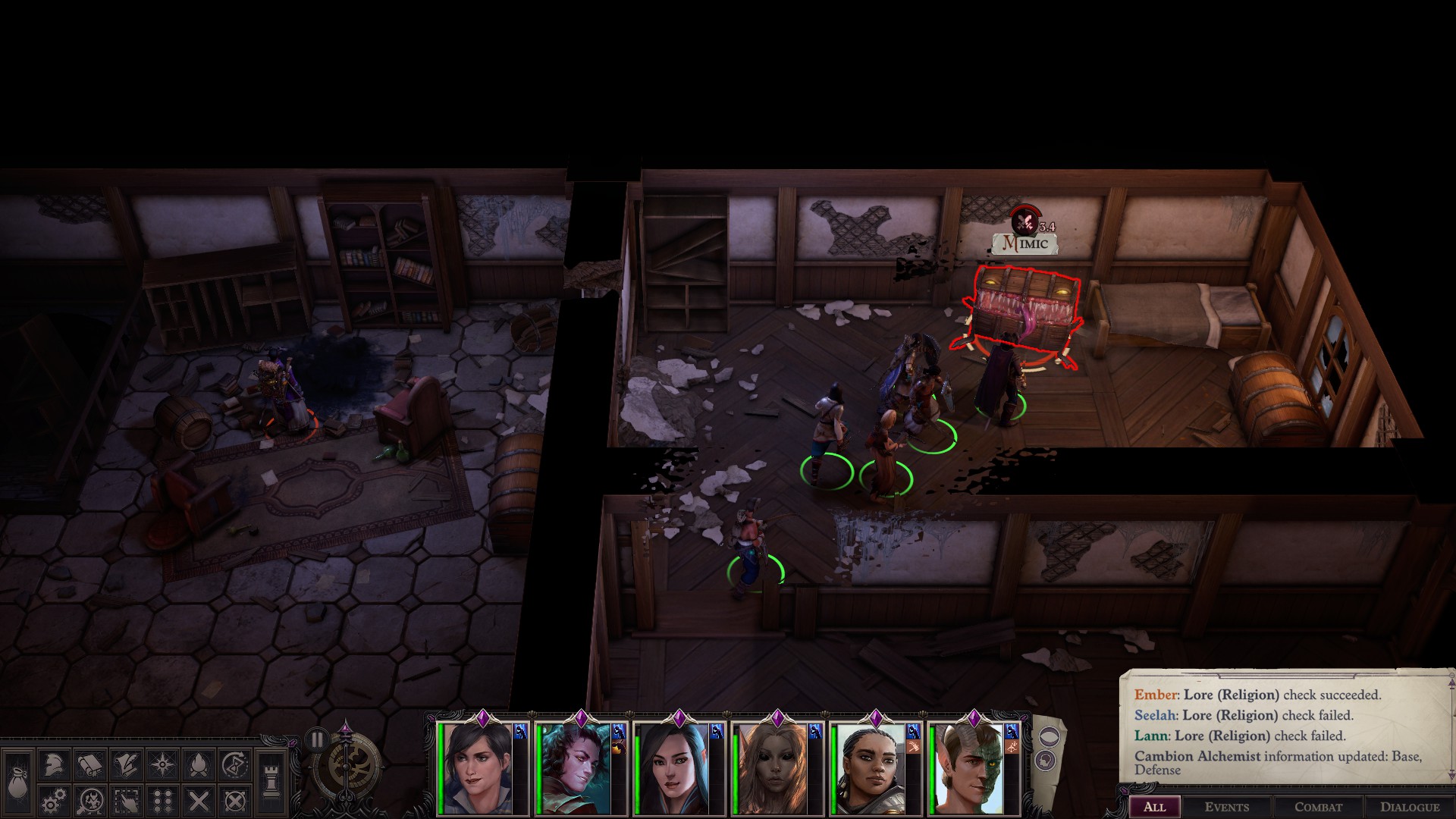
Though even with these nice details for diverse character builds, combat itself hasn’t been forgotten. Players can take feats to customize their character’s martial prowess in ways older CRPGs couldn’t. Want to dual-wield but also use a shield? Shield-bashing is now an option like it has always been in the tabletop version.
With all these options, combat can become overwhelming, in the sense that if you blink you’ll miss the AoE death spell headed your way when all your units are clumped up. Instead of usual CRPG combat, the turn-based mode is a lot more true to the tabletop game, and also easier to manage.
In the real time mode, things get crazy too fast at higher difficulties. Players are also forced to choose between gimping their party by denying them access to limited spell resources, or have them completely go off the handle and be spent for future fights. Turn based mode allows players to accurately control all characters on the field, and actually enjoy the fighting.
If feats and classes aren’t enough customization, Wrath of the Righteous is unique among Adventure Paths for its use of the “Mythic” character system. It’s here that things diverge the most from the tabletop, but in exchange the choices made here carry more narrative weight.
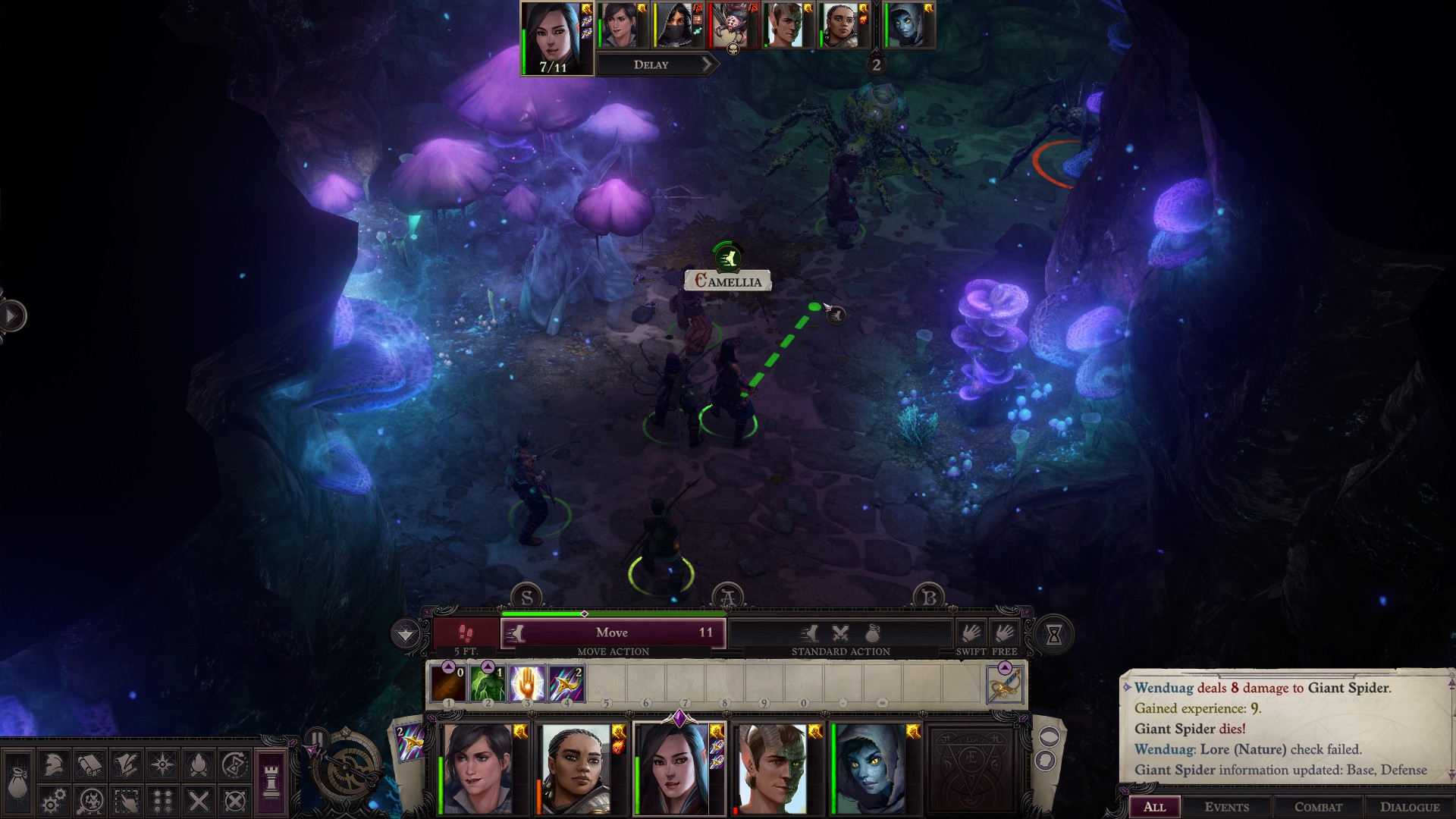
In the original tabletop, players chose a “Mythic Path” that was more like a class Champion; Hierophant, Archmage, and so forth. In this game, the paths are more like power sources. Players can attune themselves with powerful influences of both celestial or infernal nature, or perhaps something else altogether.
You can follow your character’s ascension into a being of heaven, or their transformation into a lich. These choices have not just mechanical impacts, but can drastically impact the outcome of the game’s story.
The story itself is as faithful to the original as could be expected. More than that though, Owlcat games did an amazing job bringing the characters to life. The voice work is phenomenal and the narration is on point.
There’s a few wacky characters like Nenio (an eccentric wizard companion), but far more common are important NPCs with realistic personalities and nuanced motives. I would go as far as to say that Staunton Vhane (a dwarf NPC who appears early on) is one of the best written NPCs in an RPG I’ve seen in a long time.
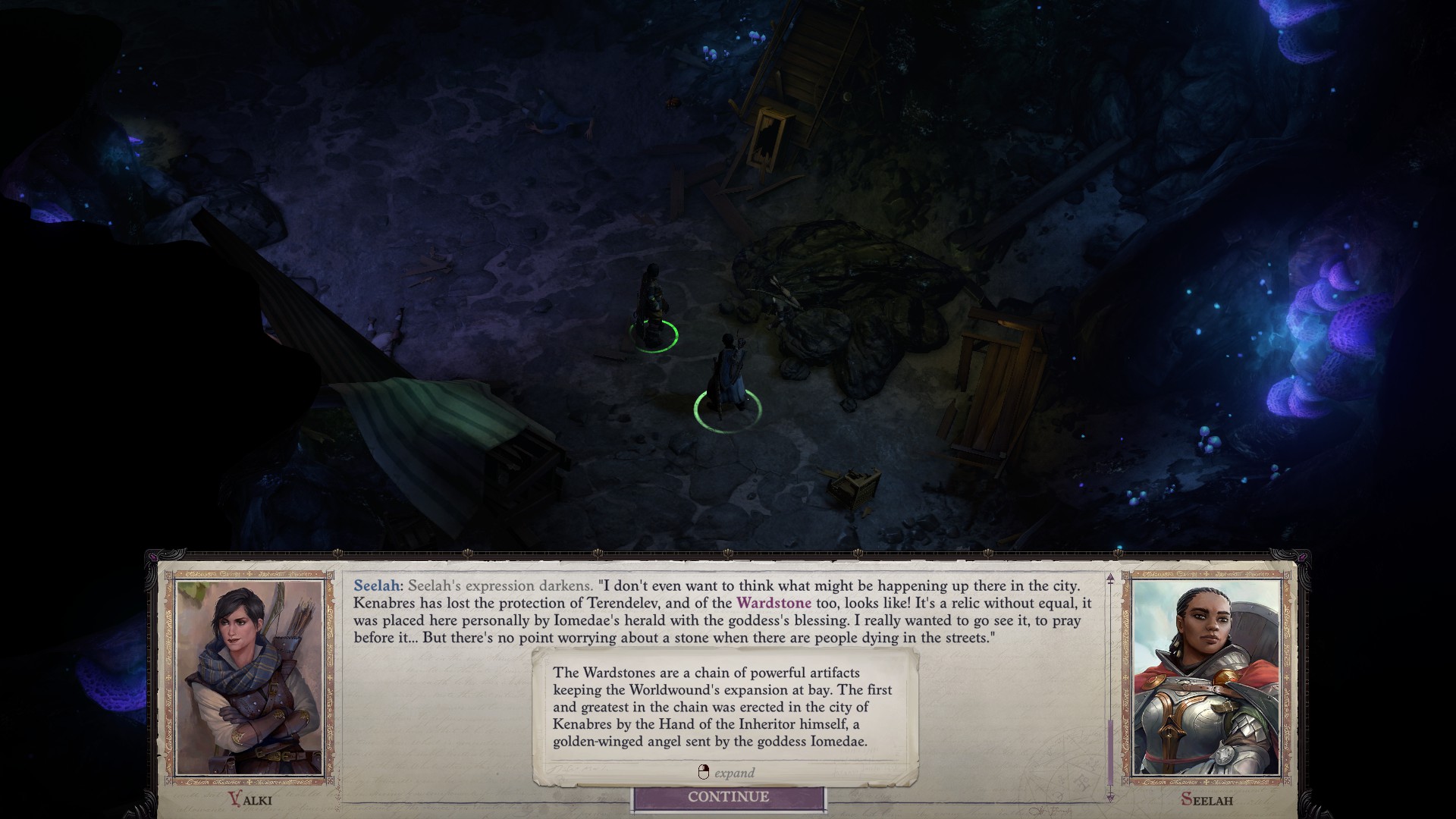
In addition the story takes place on a grand scale. The player finds themselves in the kingdom of Mendev, a nation who has been at war with demons for over a hundred years. Much like the system, players will need to either know the lore already, or do a lot of reading.
About a hundred years prior, the magic-user Areelu Vorlesh helped the Demon Lord Deskari open rifts in the land now known as the Worldwound. The rifts allow a steady flow of demons into the material plane, as well as corrupt the land around them. This invasion of demons was the impetus of the First Mendevian Crusade, the first of four assaults against the demons of the Worldwound.
The city the player is in is suddenly attacked by Deskari himself, and thrusts the city into chaos as they try and repel the demonic invaders. It’s this series of events that sees the player distinguish themselves as a powerful individual for good or ill.
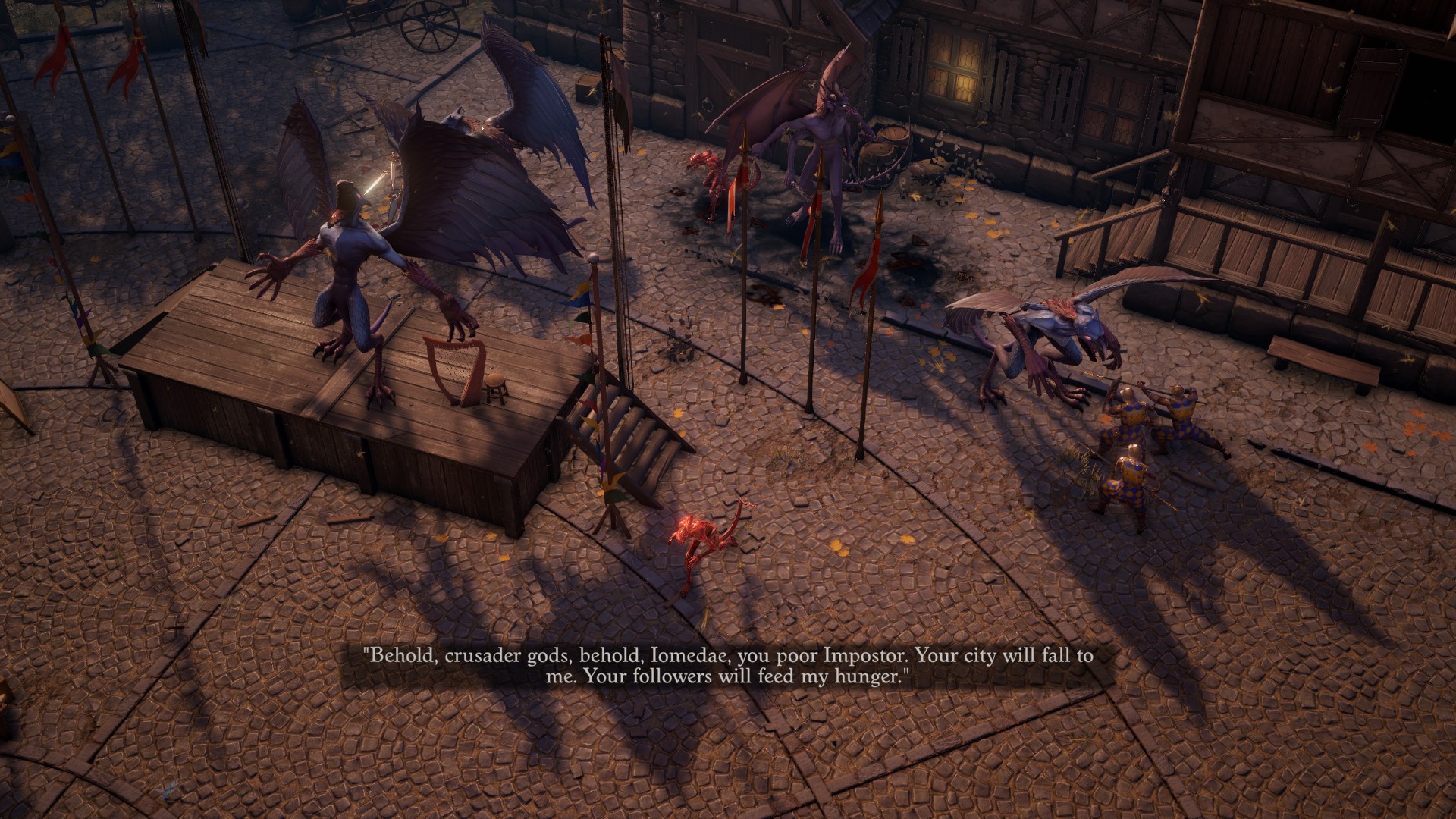
Like any good CRPG, dialogue choices are plentiful and important. Players can influence the ending both of the overall story, and of their comrades. Wrath of the Righteous offers no shortage of choices and alternate conclusions for quests based on player input.
Player choices generally fall on the alignment system all tabletop players should be familiar with. Nine alignments on two axis; Good to Evil and Law to Chaos. This usually works in a good many games, but unfortunately nuance is considered an acceptable loss. Moreso than other games though, the game does poorly on the nuance of Law and Chaos.
Law is mistakenly treated as only a blind trust in authority, and Chaos is often mistakenly conflated with “good.” There’s little room for a lawful but thoughtful character. An early quest sees the player caught between a religious feud between the inquisitors of Iomedae, and the temple of Desna. Both faiths are forces for good, but the inflexible inquisitors think the Desnans are in cahoots with the demons.
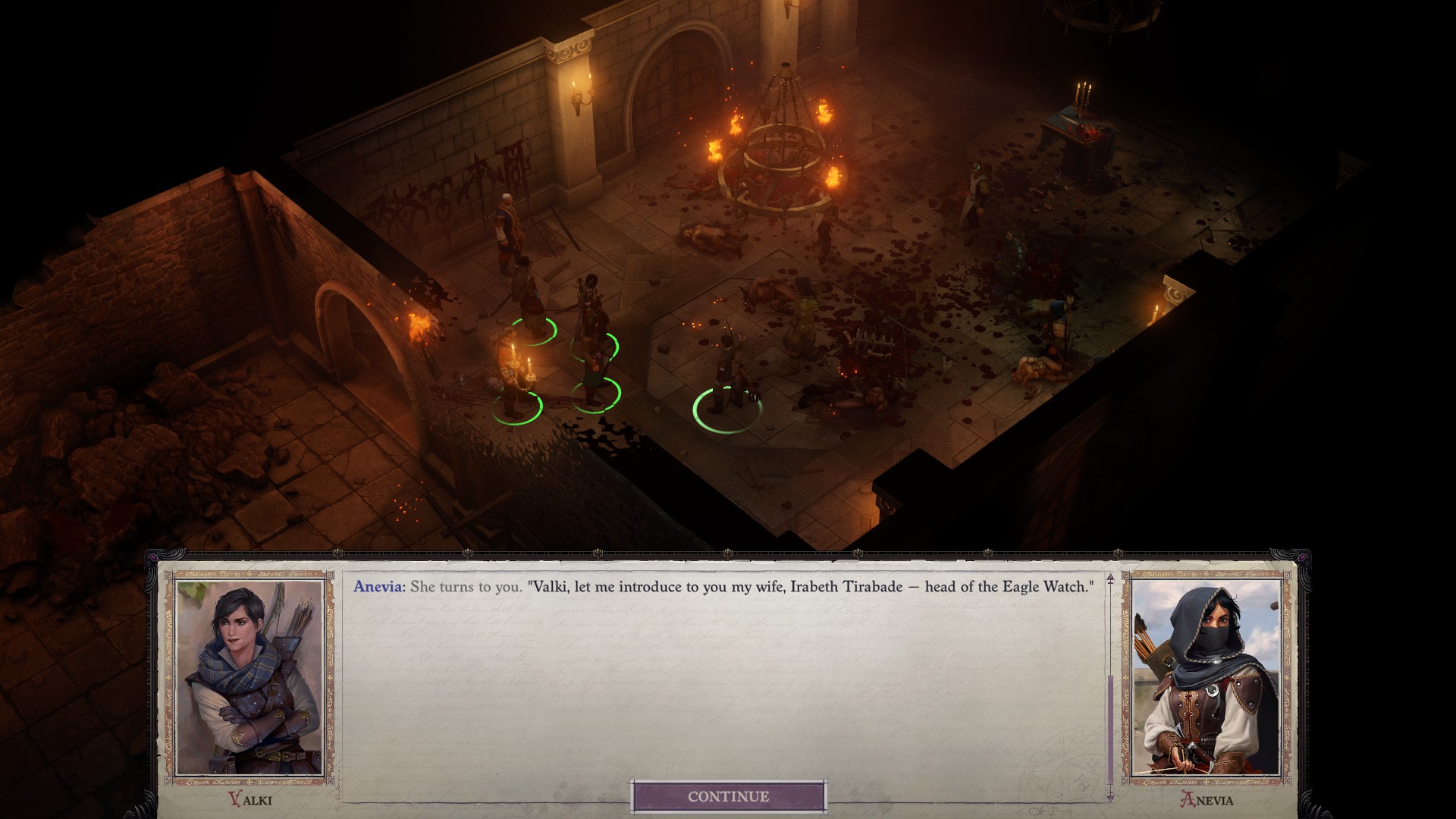
Players are invited to pursue the “lawful” option of killing the Desnans, no questions asked, or aggressively defending them, a “chaotic” act. After hearing out the Desnans, the player is told their side of the story, that they were only trying to protect the Wardstone, a relic protecting the city. They were told in a dreamlike prophecy that it was in danger, and sought to help.
The inquisitors have no room for dissent, and eventually it comes to a point where despite a lack of evidence and bigger problems at hand, it’s still considered “chaotic” to stand up against authority. Even though you’re given the lawful reasoning of a lack of evidence.
Ultimately it’s this choice and others like it that left a sour taste in my mouth playing a lawful character. I often felt like I was aiding and abetting evil, rather than enforcing order. Maybe that’s an intentional commentary about law and chaos on the part of the developers, but ultimately lawful characters feel left in the lurch.
But for that to be my biggest complaint about dialogue and morality in a CRPG is a testament to how good the rest of it is. If you throw alignment to the wind and just do what seems right for you and your character, you’ll enjoy yourself a lot more.
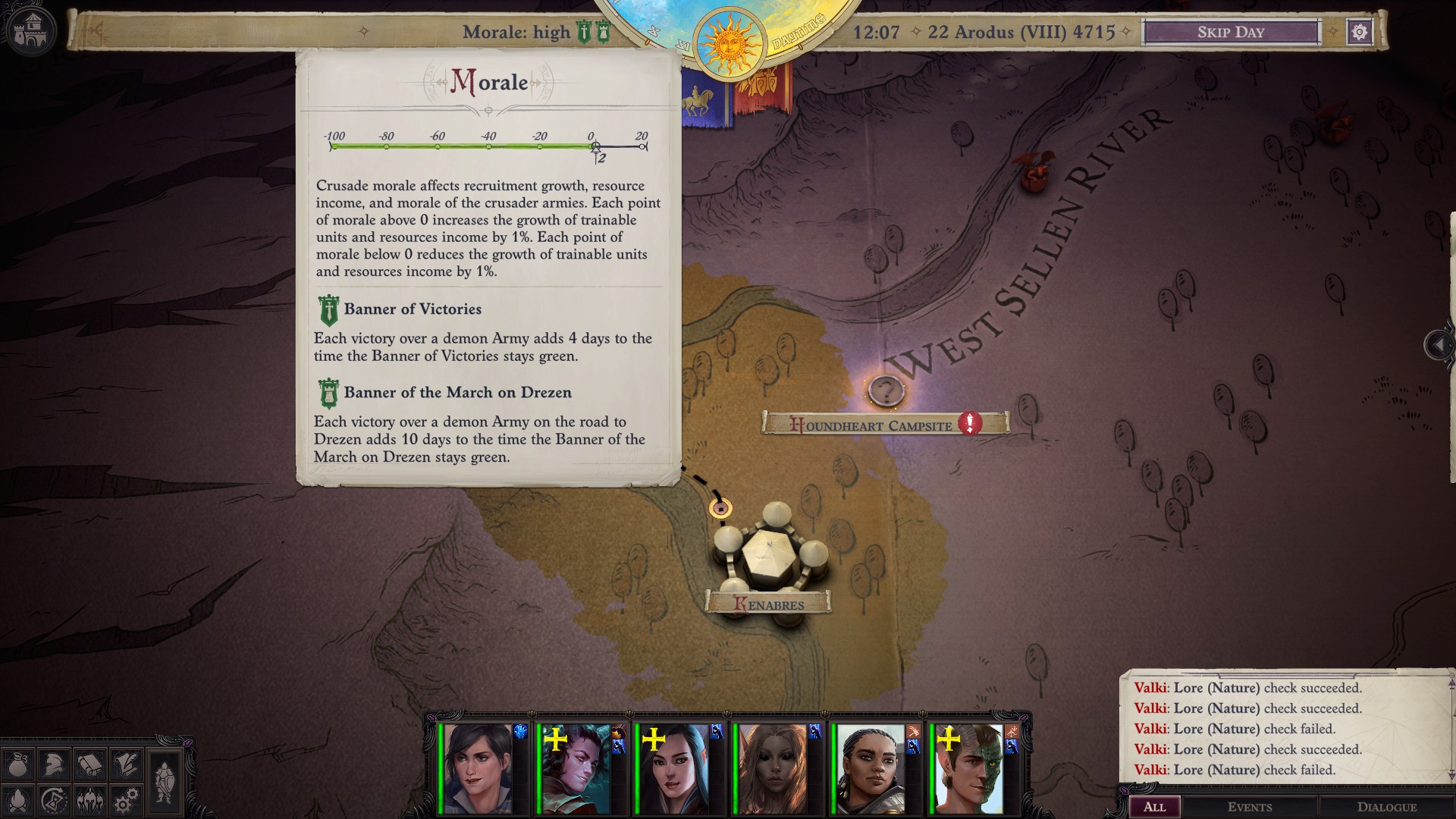
Lastly, there’s the army management system. Much like how Kingmaker had kingdom management and building, Wrath of the Righteous features army management. Players will hire troops, assign generals, and take the fight to the demons on multiple fronts.
This mechanic is… A little underwhelming. Combat takes place on a grid and features units representative of multiple soldiers. The general sits at the end off of the map and can cast abilities to enhance their troops or otherwise influence the battle.
These army battles are a chore, and thankfully there’s an option that can be enabled to skip them if that’s your choice. However, some variables in the game are affected by performance and timing in this phase. So for those wanting a more immersive game, or more control over the pace of the story, it’s suggested to keep this on.
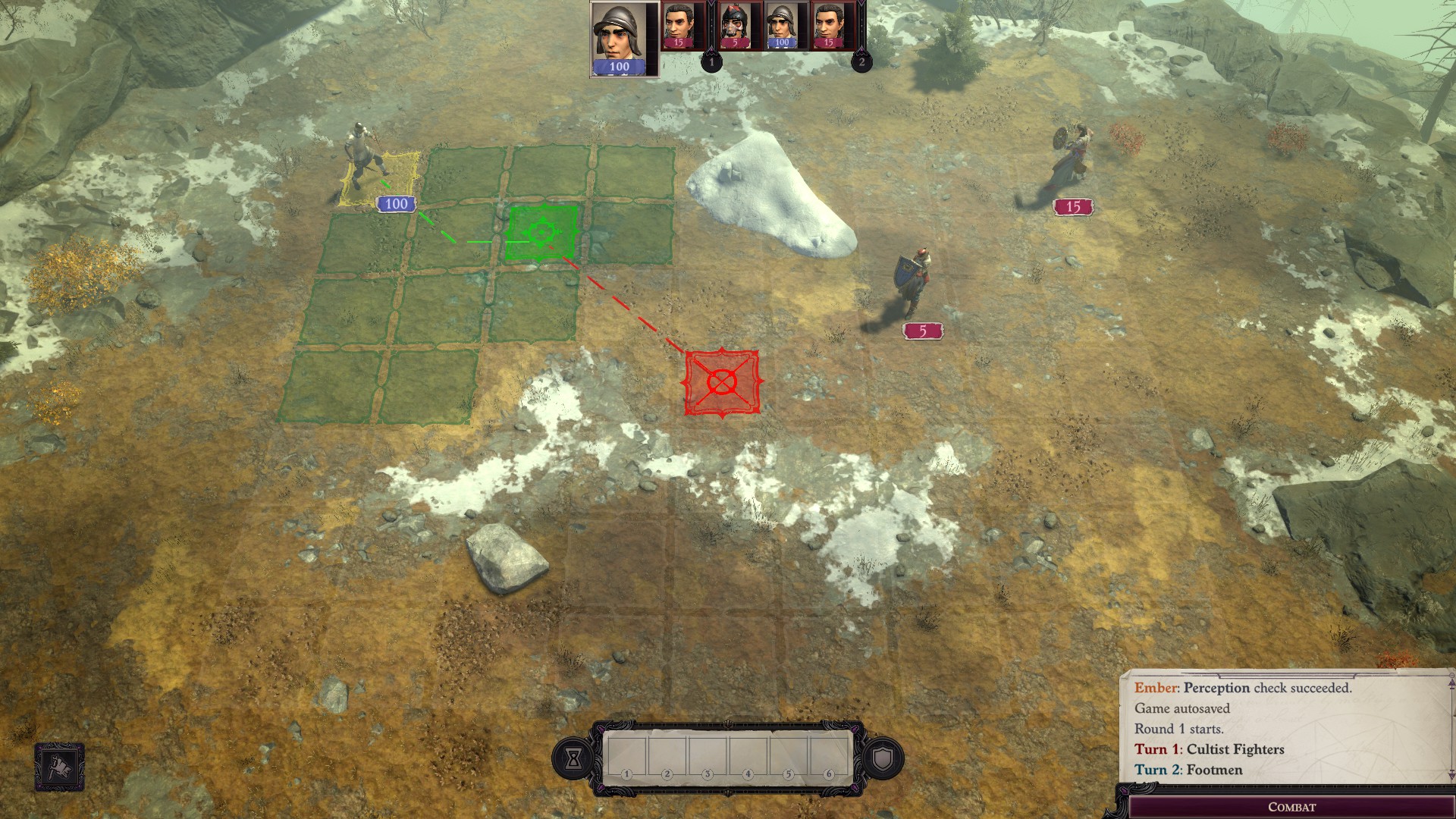
Pathfinder: Wrath of the Righteous is a faithful adaptation of the tabletop game, and a direct improvement from Pathfinder: Kingmaker. The army management system is more hands-on than the kingdom management of the previous game, but it’s a less fulfilling experience. Fans of fantasy RPGs like Baldur’s Gate, Tyranny, or tabletop RPGs would be well-served to give this game a chance.
Pathfinder: Wrath of the Righteous was reviewed on Windows PC using a review code provided by the publisher. You can find additional information about Niche Gamer’s review/ethics policy here.